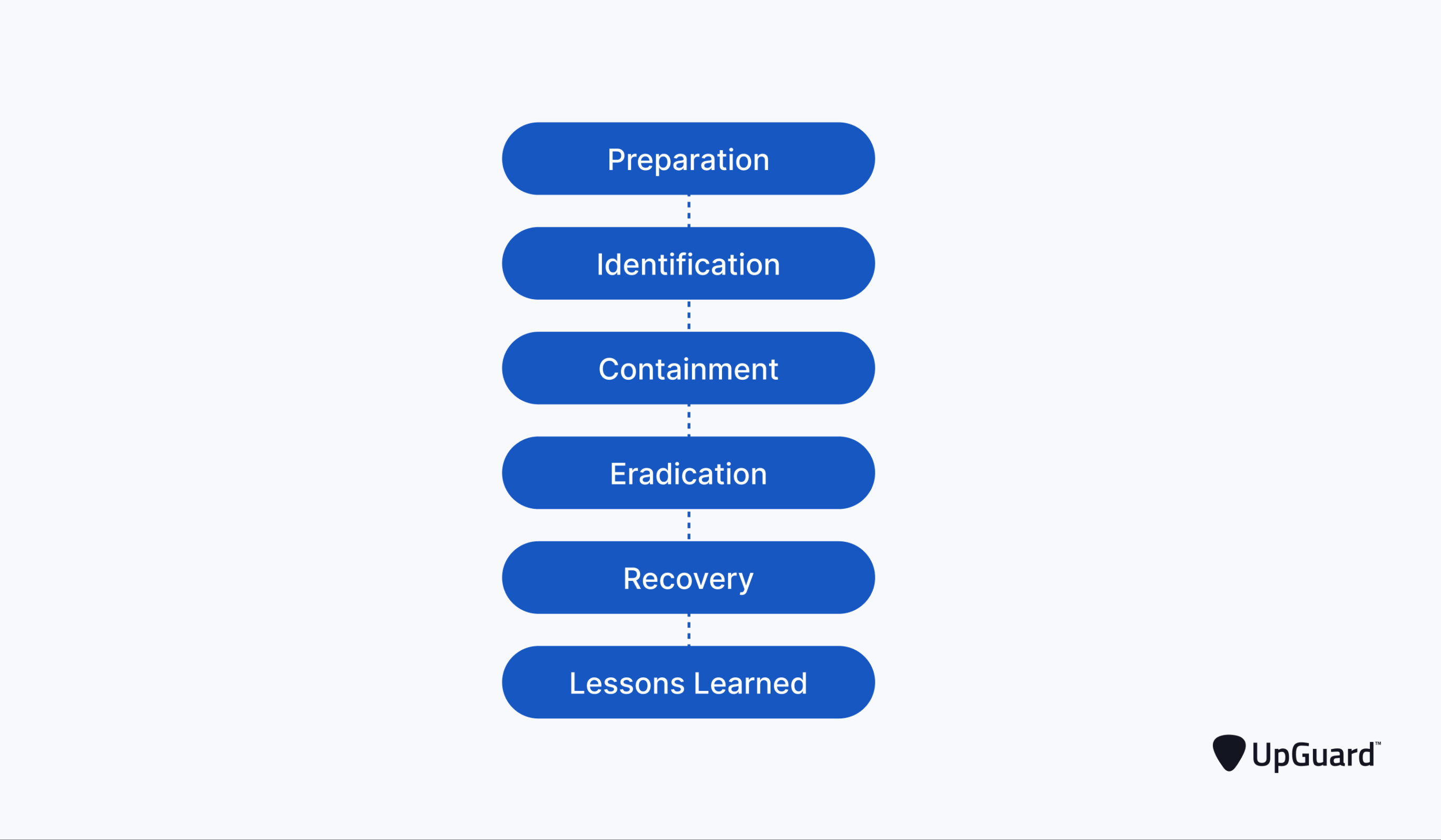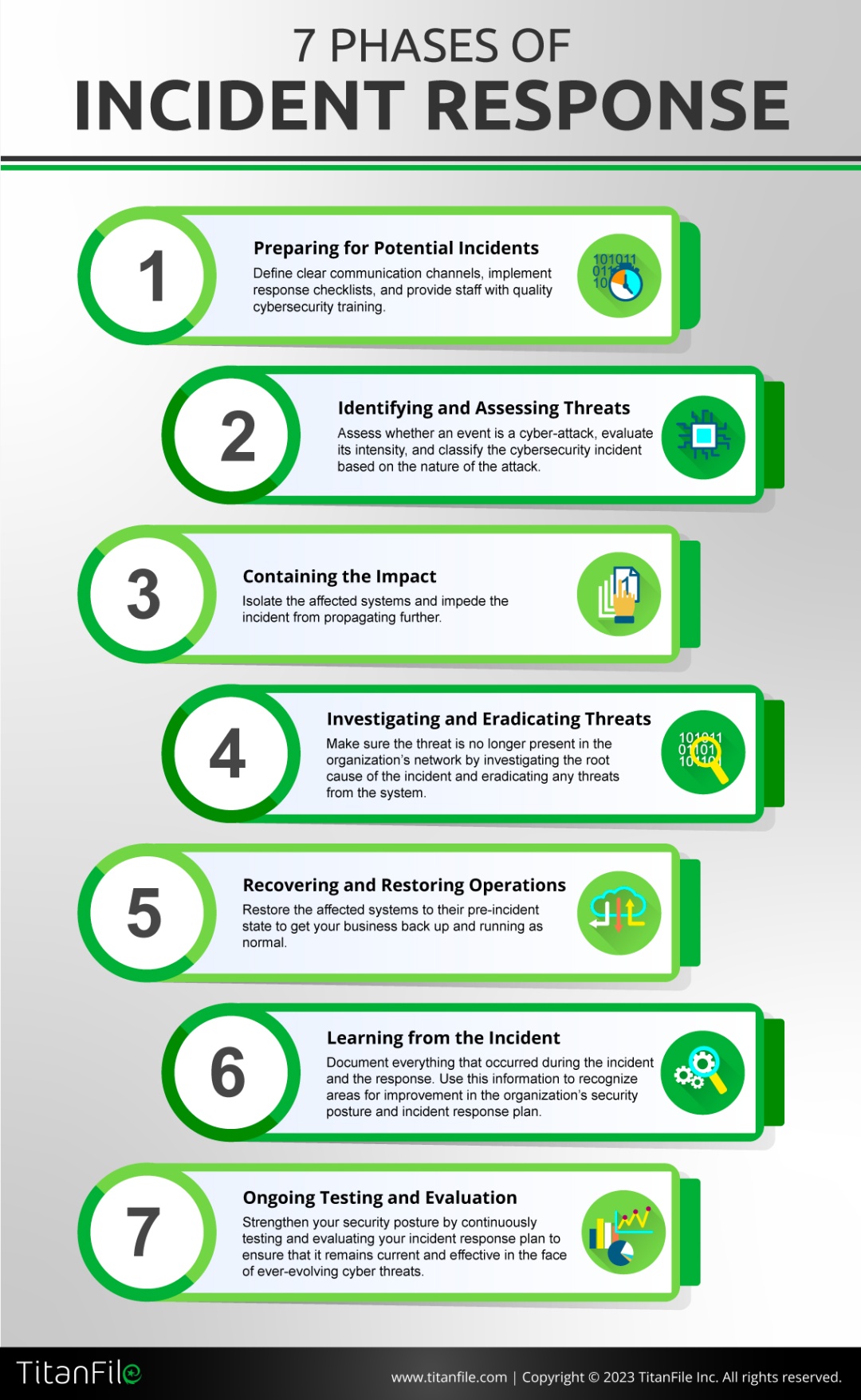Oh No, a Cyber Attack!
In today’s digital age, where almost everything is connected to the internet, cyber attacks have become a common threat to individuals and businesses alike. A cyber attack can range from a simple malware infection to a full-blown data breach, causing significant damage to the victim’s reputation and finances. But fret not, for there are ways to deal with a cyber attack like a pro and come out stronger on the other side.

Image Source: website-files.com
The first step in responding to a cyber attack is to stay calm and think clearly. It can be easy to panic and make rash decisions in the heat of the moment, but it is crucial to keep a level head and assess the situation objectively. Take a deep breath, gather your thoughts, and remember that you are not alone in this. Reach out to your IT team, Cybersecurity experts, or even law enforcement if necessary for guidance and support.
Once you have composed yourself, it is time to respond like a cybersecurity pro. This involves determining the extent of the cyber attack, identifying the source of the breach, and containing the damage as quickly as possible. Depending on the severity of the attack, you may need to shut down systems, change passwords, and notify affected parties. It is important to act swiftly and decisively to minimize the impact of the cyber attack and prevent further harm.

Image Source: titanfile.com
As you navigate through the aftermath of the cyber attack, remember that resilience is key to bouncing back stronger than ever. It is natural to feel overwhelmed and frustrated, but staying positive and proactive will help you overcome this setback. Learn from the experience, implement stronger security measures, and use the incident as an opportunity to improve your cybersecurity posture. With the right mindset and approach, you can turn a cyber attack into a valuable learning experience that will ultimately make you more resilient and prepared for future threats.
In conclusion, a cyber attack may be a daunting experience, but it does not have to spell the end for you or your business. By staying calm, responding like a cybersecurity pro, and bouncing back stronger than ever, you can turn the tables on the attackers and emerge victorious. Remember, it is not about avoiding cyber attacks altogether, but about how you respond to them that truly matters. So, the next time you find yourself facing a cyber attack, channel your inner cybersecurity pro and tackle the challenge head-on.
Stay Calm and Think Clearly
In today’s digital age, it’s not a matter of if a Cybersecurity incident will occur, but when. With cyber attacks becoming increasingly common, it’s essential for individuals and organizations to be prepared to respond effectively when they occur. One of the most important things to remember when faced with a cybersecurity incident is to stay calm and think clearly.
When a cyber attack occurs, it’s easy to feel overwhelmed and panicked. However, it’s crucial to keep a level head and approach the situation with a clear mind. Panicking can lead to making hasty decisions that could worsen the situation. By staying calm, you can assess the situation rationally and determine the best course of action to take.
One of the first things to do when faced with a cybersecurity incident is to gather all relevant information. This includes identifying the type of attack, determining the extent of the damage, and understanding how the attack occurred. By having a clear understanding of the situation, you can develop a plan to mitigate the damage and prevent future attacks.
Next, it’s important to communicate effectively with all stakeholders involved. This includes internal employees, external partners, and customers who may have been affected by the attack. By keeping everyone informed, you can ensure that everyone is on the same page and working towards a common goal of resolving the incident.
In addition to communicating with stakeholders, it’s also important to engage with cybersecurity experts who can help assess the situation and provide guidance on how to respond. Cybersecurity professionals have the knowledge and expertise to help contain the attack, remove any malicious software, and strengthen your defenses to prevent future incidents.
As you work to resolve the cybersecurity incident, it’s important to remain adaptable and flexible in your approach. Cyber attacks are constantly evolving, so it’s essential to be willing to adjust your response strategies as needed. By staying nimble and open to new ideas, you can effectively navigate through the incident and come out stronger on the other side.
Finally, it’s crucial to learn from the cybersecurity incident and use it as an opportunity to improve your security measures. Whether it’s implementing stronger passwords, conducting regular security audits, or providing cybersecurity training for employees, there are always steps you can take to enhance your defenses and protect against future attacks.
In conclusion, staying calm and thinking clearly is essential when responding to a cybersecurity incident. By approaching the situation with a level head, gathering relevant information, communicating effectively, engaging with cybersecurity experts, remaining adaptable, and learning from the incident, you can effectively navigate through the attack and come out stronger on the other side. So, the next time you’re faced with a cyber attack, remember to stay calm and think clearly – you’ve got this!
Responding like a Cybersecurity Pro
So, you’ve found yourself in the midst of a cybersecurity incident. Don’t panic! It’s time to put on your cyber cape and respond like a pro. Here are some tips to help you navigate through this challenging situation like a boss.
First and foremost, assess the situation. Take a deep breath and gather all the necessary information about the incident. What exactly happened? How did the breach occur? What data or systems are affected? Understanding the scope of the incident is crucial in formulating an effective response plan.
Next, contain the incident. Act swiftly to prevent further damage by isolating the affected systems or networks. This may involve taking them offline or implementing temporary security measures to limit the spread of the breach. By containing the incident, you can minimize the impact on your organization and prevent it from escalating further.
Once the incident is contained, it’s time to investigate the root cause. Work with your IT team or cybersecurity experts to analyze the breach and identify how it occurred. This will help you understand any vulnerabilities in your systems or processes that need to be addressed to prevent future incidents.
After identifying the root cause, it’s time to remediate the issue. Implement necessary security patches, update your security protocols, and strengthen your defenses to prevent similar incidents from happening again. This may involve updating software, changing passwords, or enhancing your cybersecurity infrastructure.
Communication is key during a cybersecurity incident. Keep all relevant stakeholders informed about the situation, including employees, clients, and partners. Transparency is crucial in maintaining trust and credibility, so be open and honest about the incident and the steps you are taking to address it.
As you work through the incident response process, document everything. Keep detailed records of the incident, your response actions, and any findings from the investigation. This documentation will not only help you learn from the incident but also serve as a valuable resource in case of future breaches.
Finally, learn from the incident. Take time to debrief with your team and assess what went well and what could be improved in your response. Use this experience to enhance your cybersecurity posture and better prepare for any future incidents that may arise.
By responding like a cybersecurity pro, you can effectively manage a cybersecurity incident and bounce back stronger than ever. Remember, stay calm, think clearly, and tackle the situation head-on. You’ve got this!
Bouncing Back Stronger than Ever
Dealing with a Cybersecurity incident can be a daunting experience, but it’s important to remember that you are not alone. With the right mindset and approach, you can bounce back stronger than ever from a cyberattack. In this article, we will explore how you can respond to a cybersecurity incident like a pro and come out on top.
The first step in bouncing back from a cyberattack is to assess the damage. Take stock of what information has been compromised and what systems have been breached. This will help you understand the extent of the incident and what steps need to be taken to mitigate the damage. It’s important to remain calm and think clearly during this process, as panicking will only make the situation worse.
Once you have assessed the damage, it’s time to take action. This may involve contacting cybersecurity experts to help you secure your systems and investigate the incident. It’s important to act quickly and decisively to prevent further damage and protect your data. Remember, time is of the essence when responding to a cyberattack, so don’t delay in taking necessary steps.
In addition to securing your systems, it’s important to communicate with your stakeholders and customers about the incident. Transparency is key in these situations, and keeping your stakeholders informed will help build trust and credibility. Be honest about what has happened and what steps you are taking to address the issue. Your stakeholders will appreciate your honesty and proactive approach to solving the problem.
Once you have secured your systems and communicated with your stakeholders, it’s time to focus on bouncing back stronger than ever. Use the incident as a learning opportunity to strengthen your cybersecurity measures and prevent future attacks. Conduct a thorough review of your systems and processes to identify any vulnerabilities and address them promptly. By learning from the incident, you can improve your cybersecurity posture and better protect your organization in the future.
It’s also important to stay positive and maintain a proactive attitude throughout the recovery process. Cyberattacks can be stressful and overwhelming, but it’s important to stay focused on the task at hand and keep moving forward. Remember, adversity can make you stronger, and by overcoming this challenge, you will emerge more resilient and better prepared to face future cybersecurity threats.
In conclusion, bouncing back stronger than ever from a cyberattack requires a proactive mindset, quick action, and a commitment to continuous improvement. By assessing the damage, taking swift action, communicating effectively, and learning from the incident, you can strengthen your cybersecurity defenses and protect your organization from future attacks. Remember, with the right approach and attitude, you can overcome any cybersecurity challenge and emerge stronger on the other side.
cybersecurity incident response